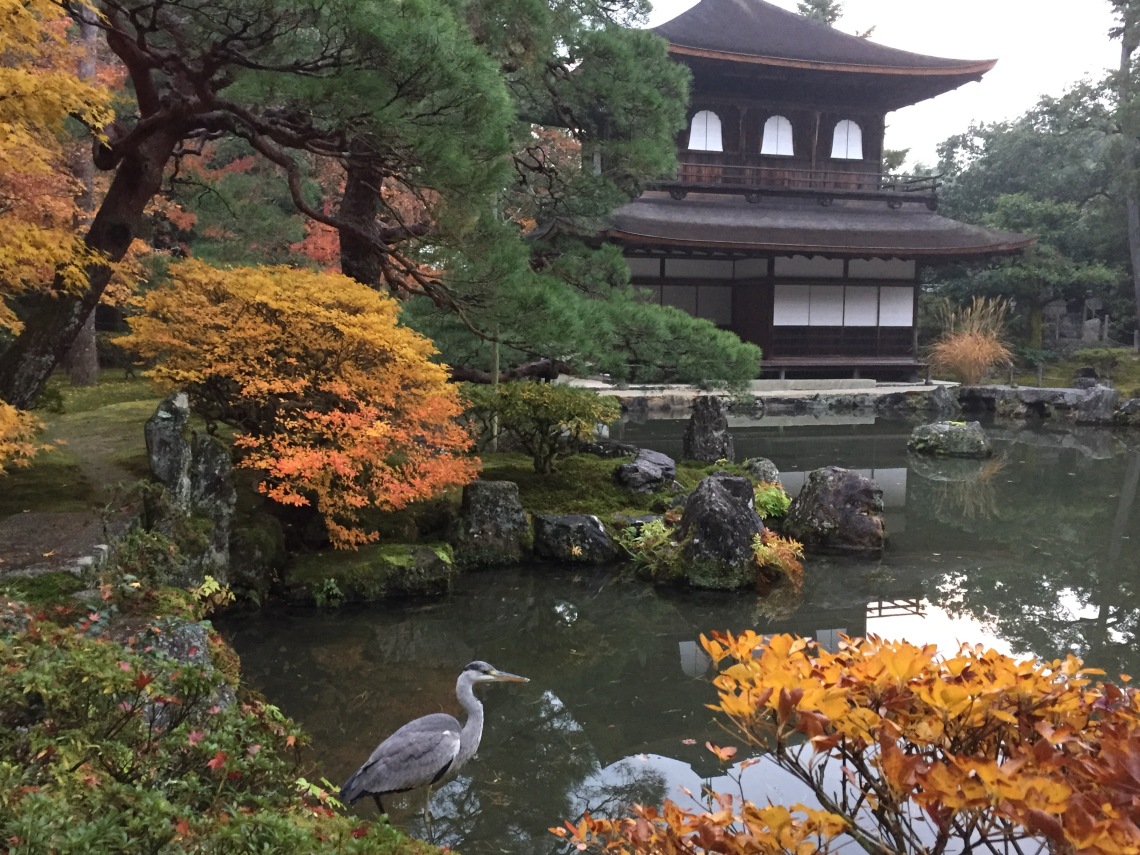We booked the Kyoto & Nara 1-Day Tour through Expedia. First stop in Kyoto was a guided tour of Nijo Castle and about 30 minutes of free time to roam the castle grounds – not nearly enough time to see everything. Second stop was Kinkakuji Temple, also known as the golden pavilion, because the top two floors of the temple are completely covered in gold leaf. It is a popular tourist attraction for good reason and due to the large crowds, we had to utilize our ninja skills and my husband’s height to capture decent photos. 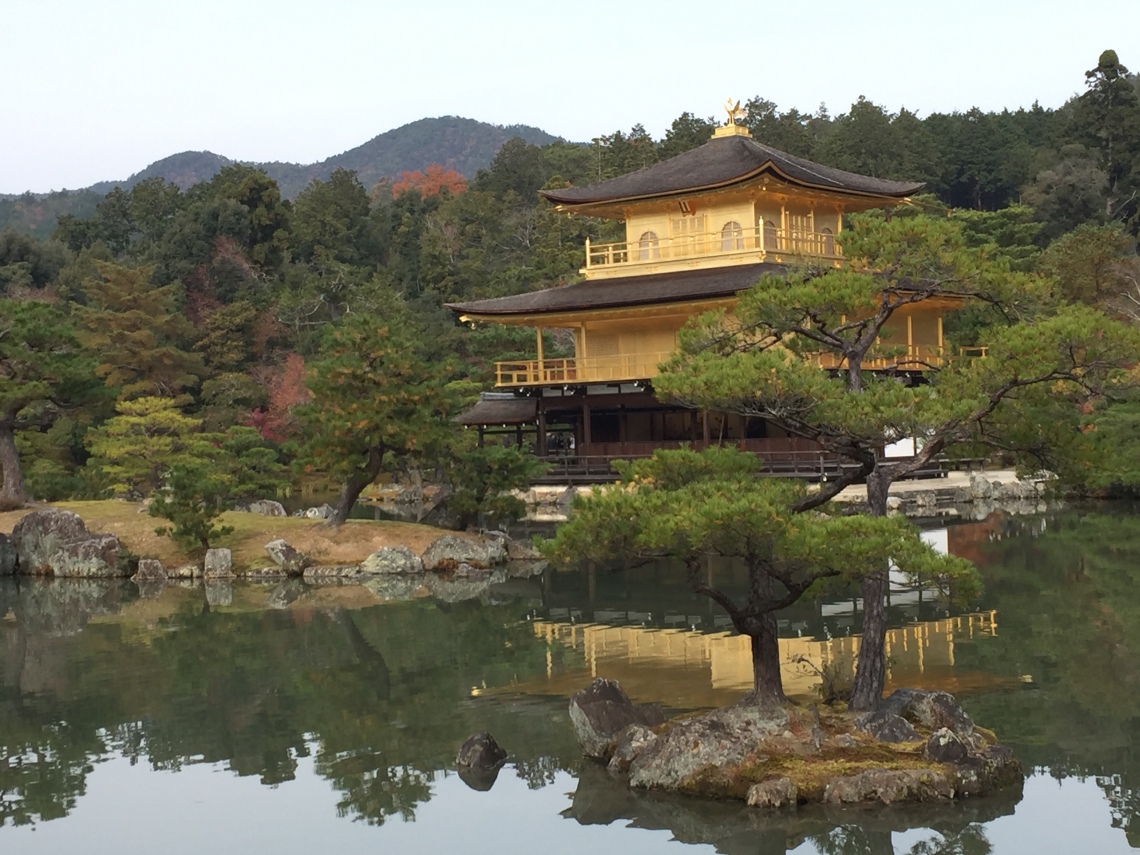
The tour provided basic a simple cafeteria styled lunch buffet before driving to the city of Nara – Japan’s first capital. The first stop was Todaiji Temple. The walk to the temple led us through the Deer Park where we saw hundreds of tame free roaming deers walking, sleeping, and getting fed by tourists. Our guide had to try extra hard to usher our group past the adorable deers to the actual temple.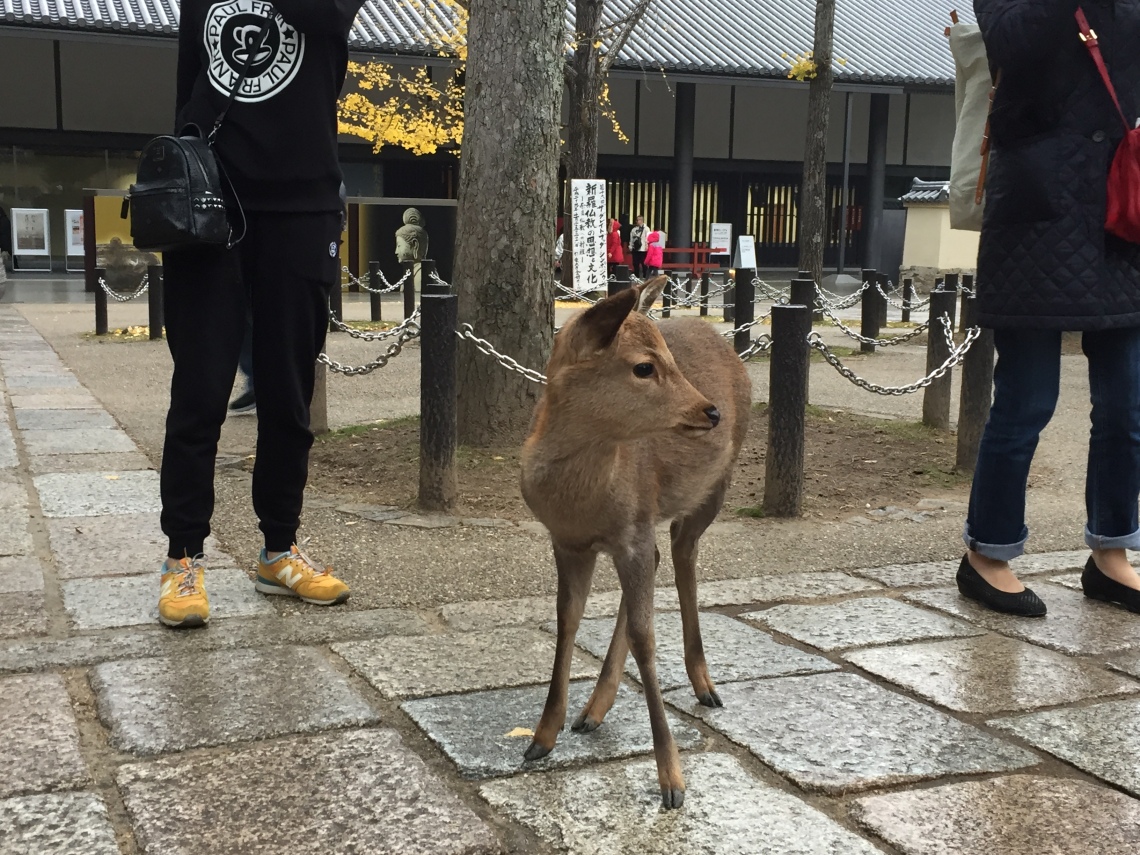
Todaiji houses the biggest bronze buddha in the world, almost 15 meters high and weighing over 500 tons. There were booths inside the temple where we bought a few omamoris (luck and protection charms) and a package of medicinal herbal bath packets.
The last stop was Kasuga-taisha Shrine. To get to the shrine, we walked up a path lined with thousands of moss covered stone and bronze lanterns, donated by citizens to show thanks to the shrine. It felt like we had walked into a Miyazaki film – beautiful yet haunting.
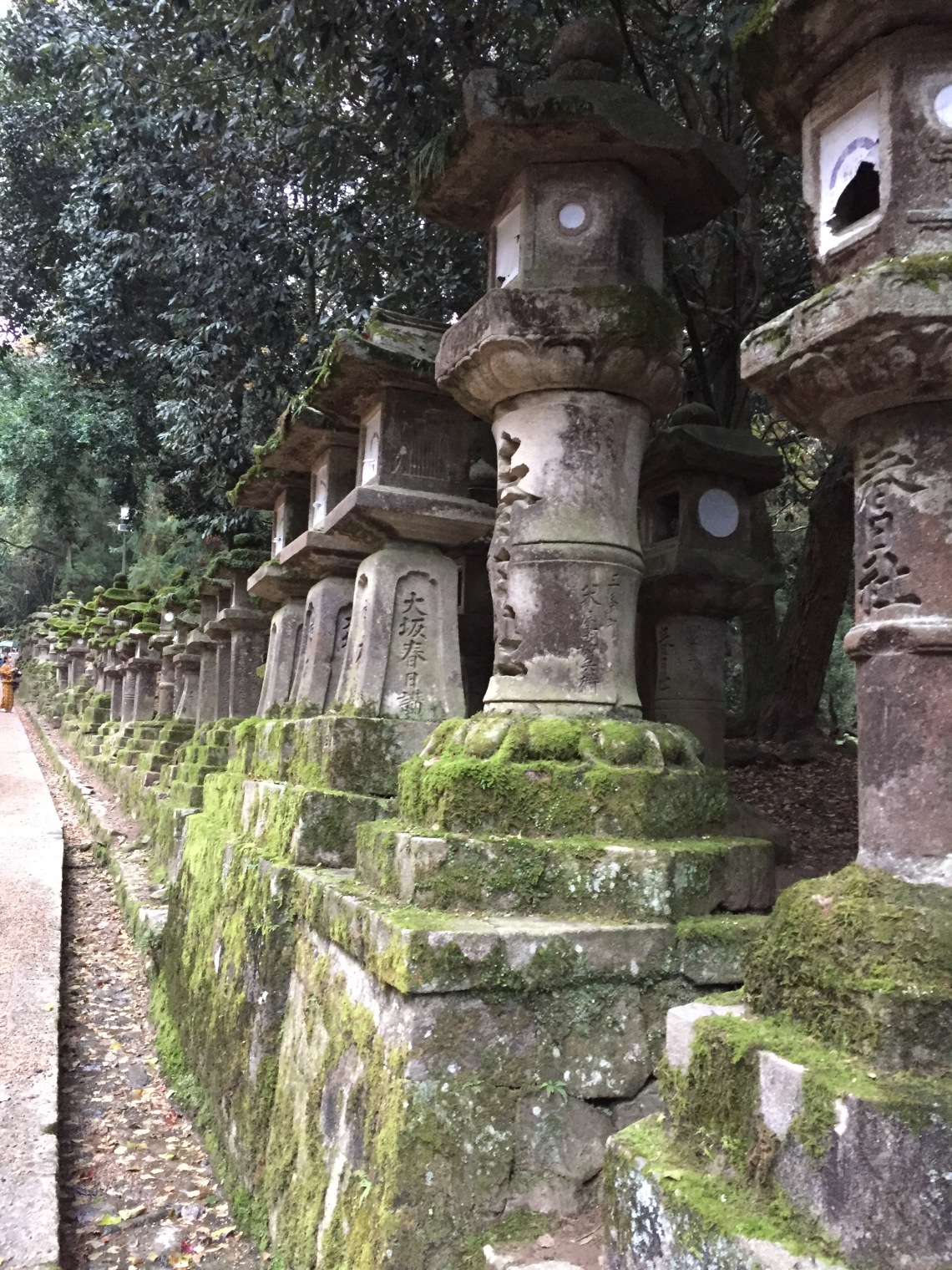
For dinner we decided to wait in a long line to try Musashi, a popular conveyor belt sushi restaurant at Kyoto station. The selection was much more interesting than the ones back home, though we stuck mostly to our usual favorites. We tried a few new fishes but were not brave enough to go for the “raw horse.”
Next day we checked out of Noku, left our luggage with the front desk and took the train to meet my husband’s uncle, one the engineers who worked on the Akashi Bridge. We visited the Bridge Exhibition Center and then toured the Sun Yat-sen Memorial Hall. Sun Yat-sen is considered the founding father of the Republic of China. The Memorial Hall was created inside his former residence in Kobe, Japan, where he lived during his exile.
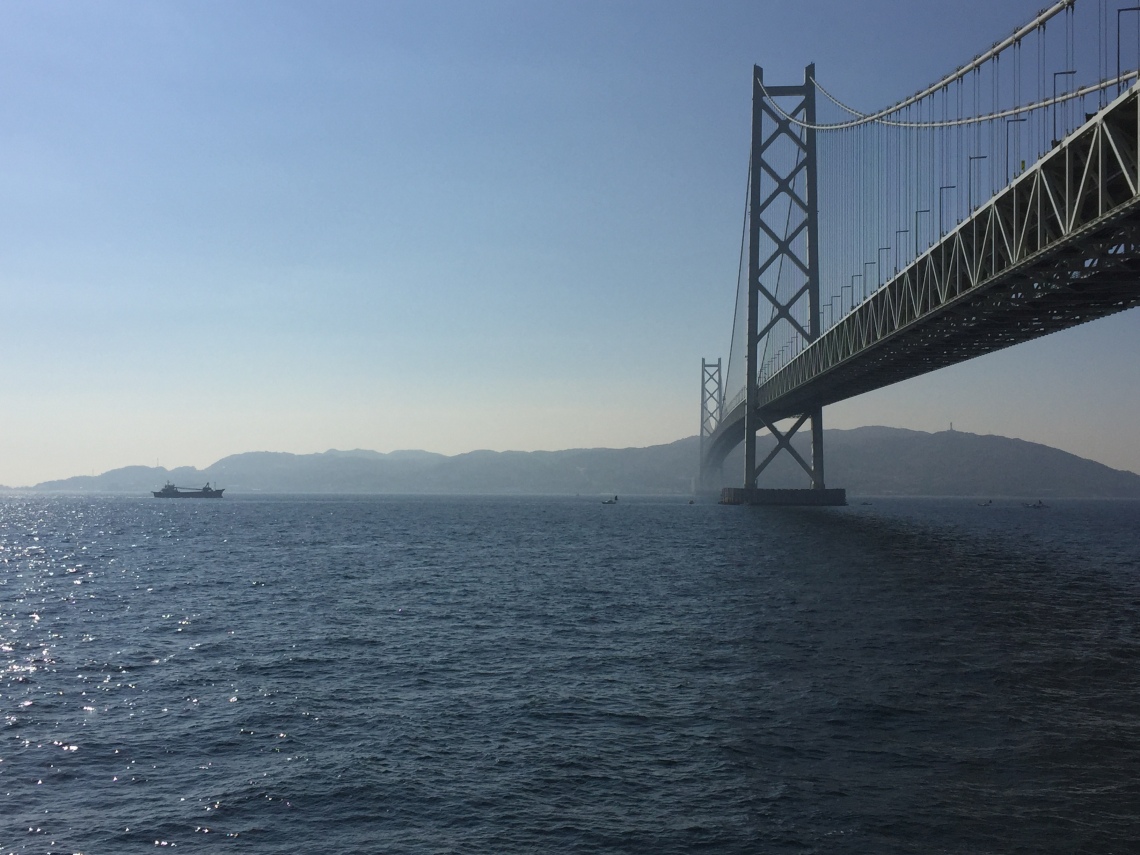
For lunch, we went to a seaside hotel called Maiko Villa. There were several dining options of different cuisines and we decided on the Japanese restaurant, ARISUGAWA. It was a very large restaurant with multiple rooms and the servers were dressed in traditional kimonos. I ordered the lunch kaiseki and to my surprise, one of the courses included a piece of lightly fried fugu (pufferfish)! I didn’t know until after I gobbled it up.
After lunch we took a short drive to Himeji Castle. We got there near closing time so we sprinted through the giant park, up the hill, and arrived at the entrance in a sweaty mess. Himeji Castle, also known as the “White Castle” because of its beautiful white exterior is the only castle which has remained intact since it was built over 400 years ago. The interior was plain, since it was originally built as a fort, but the exterior architecture was stunning under the colors of sunset.
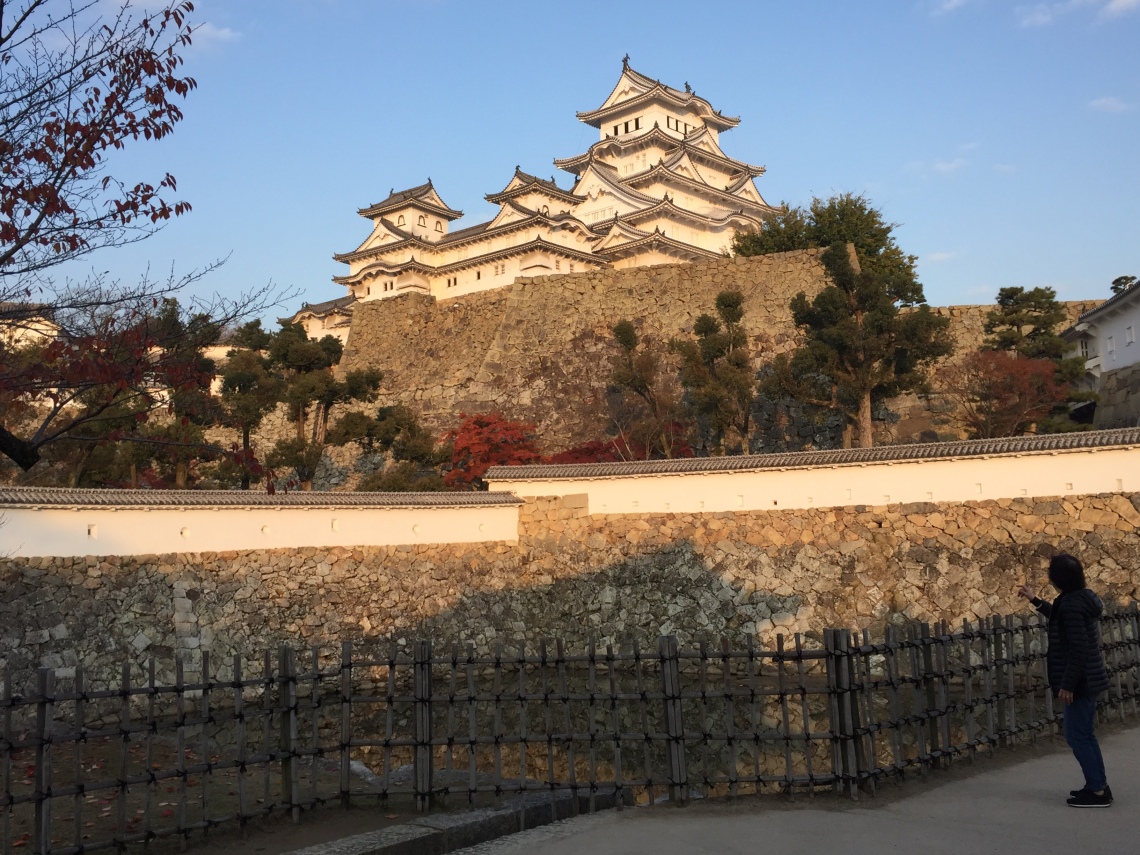
At the Sannomiya station, a Chinese restaurant serving black colored dumplings caught my interest. They turned out to be beef dumplings wrapped in charcoal-infused dough, part of the latest charcoal food trend. In addition to the dumplings, we ordered two dinner sets, fried rice, and the best hot and soup I ever had.
We picked up our luggage and took a taxi to the guesthouse, The Earthship, where my husband stayed 10 years ago when he was a teenager working in Japan. He wanted to relive those memories and convinced me that it would be a good experience. Up to this point, I had never stayed at a guesthouse before and bunkbeds didn’t sound very romantic.
The Earthship offers both shared rooms and private rooms with a private shower, both furnished with bunkbeds The original owner was still there so he offered us a good rate for the private room. We took it easy the next two days, sleeping in and hanging out in the common living room. Before heading back to Japan, we visited one last temple, Ginkakuji, also known as the “silver” temple. Unlike Kinkakuji, Ginkakuji’s nickname does not accurately describe the temple since it is not covered in silver. The temple itself is not particularly interesting, however the garden and its fall foliage was breathtaking.